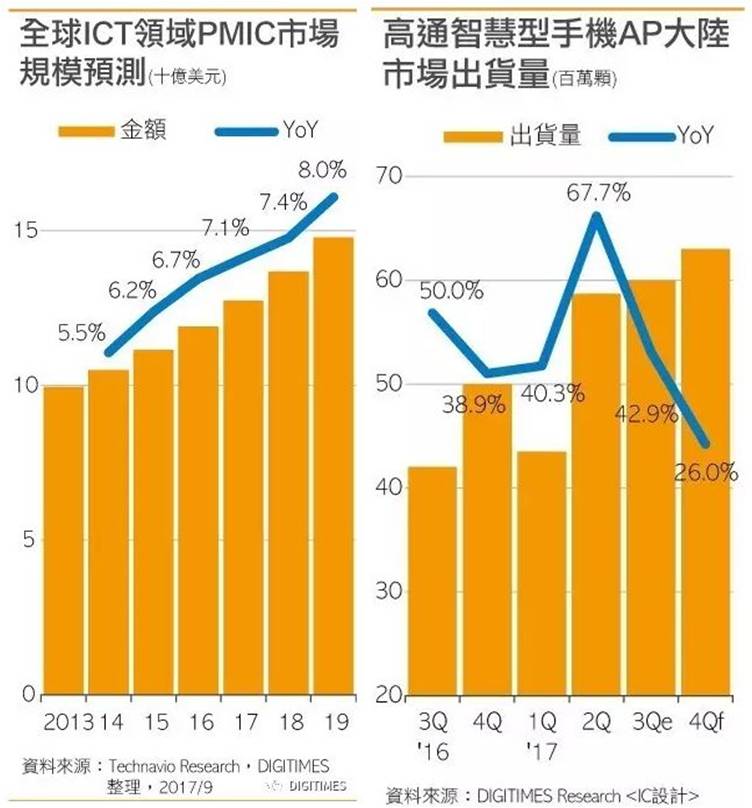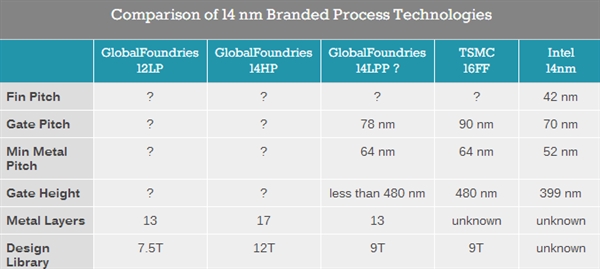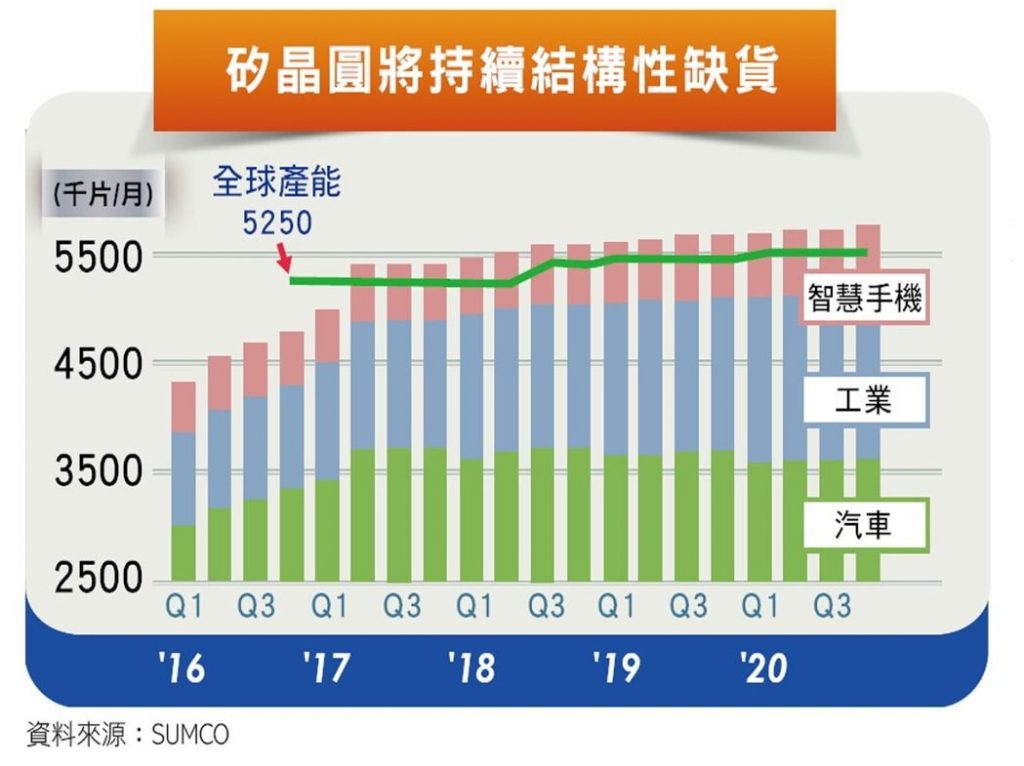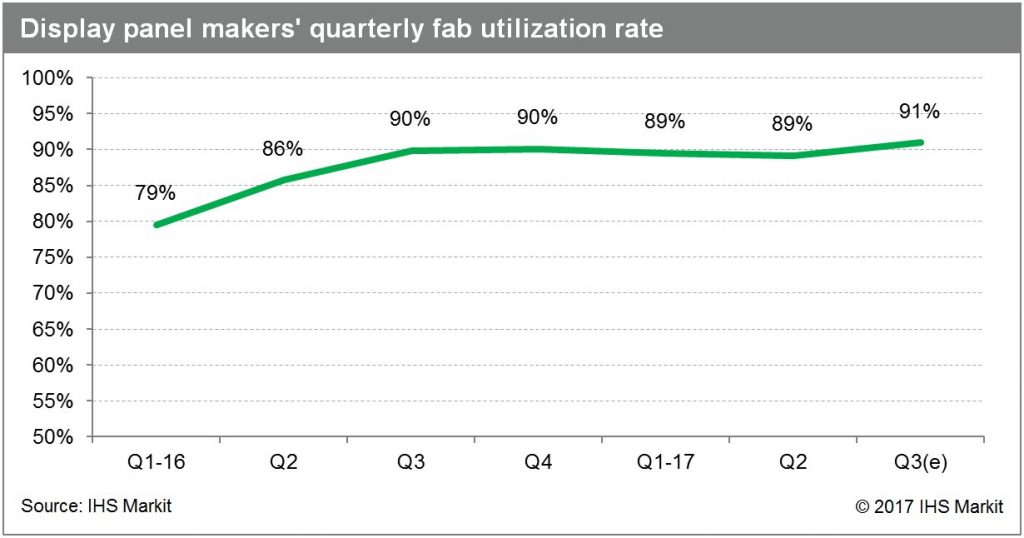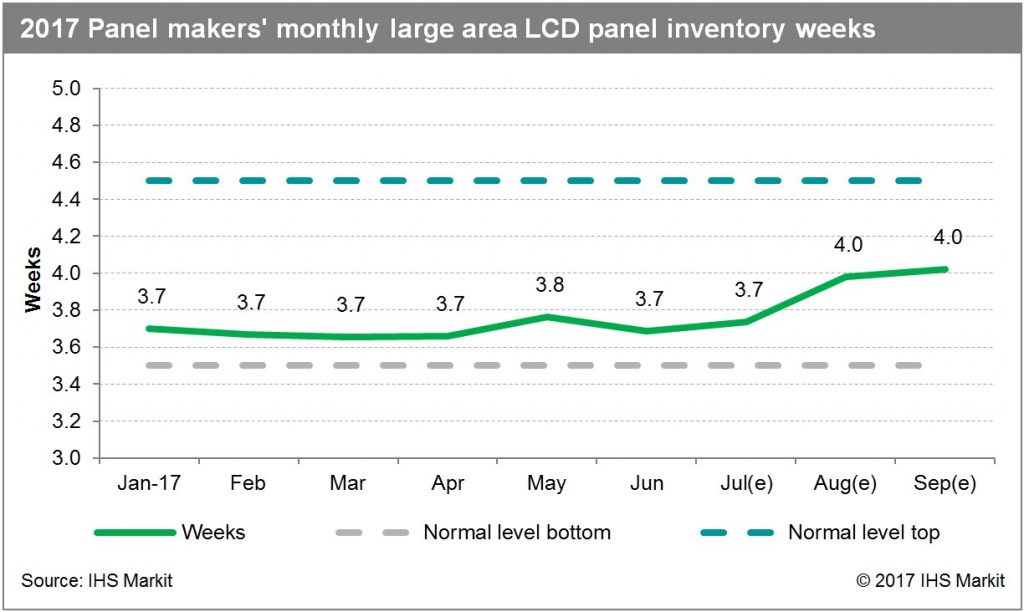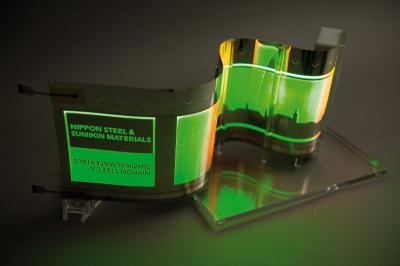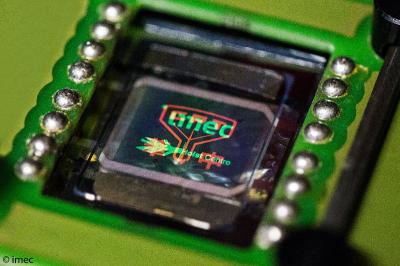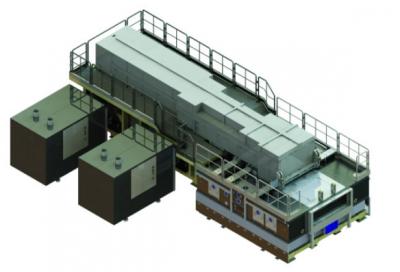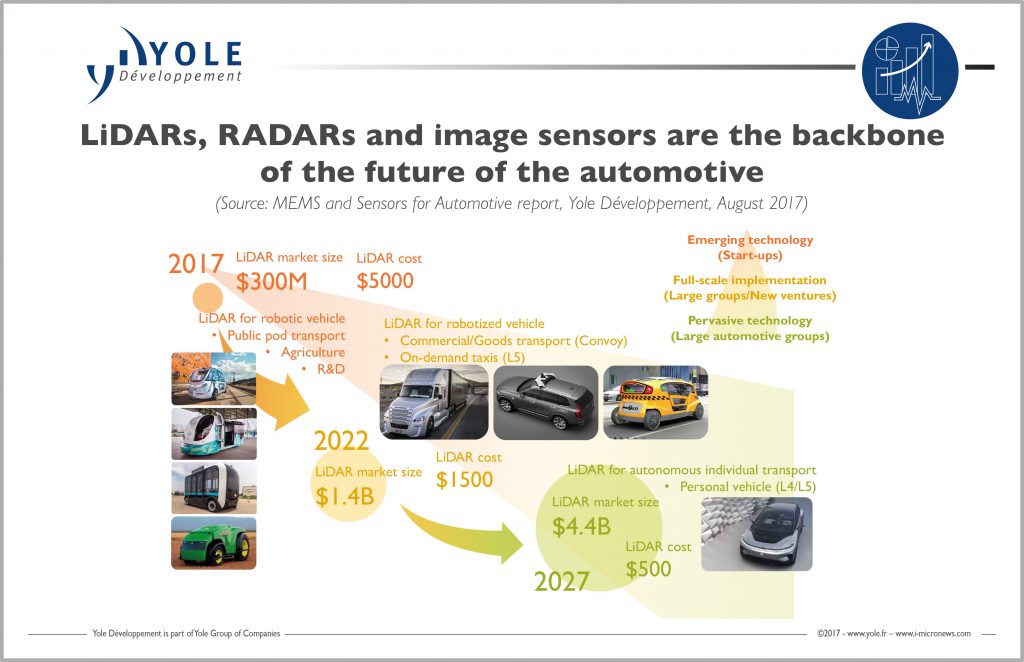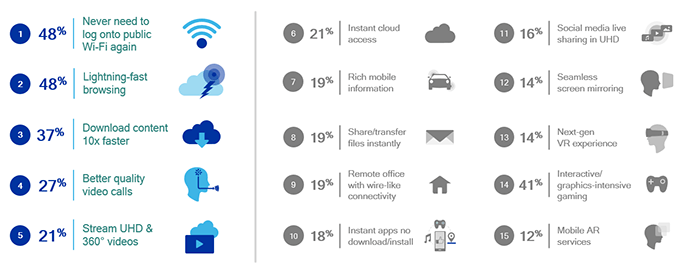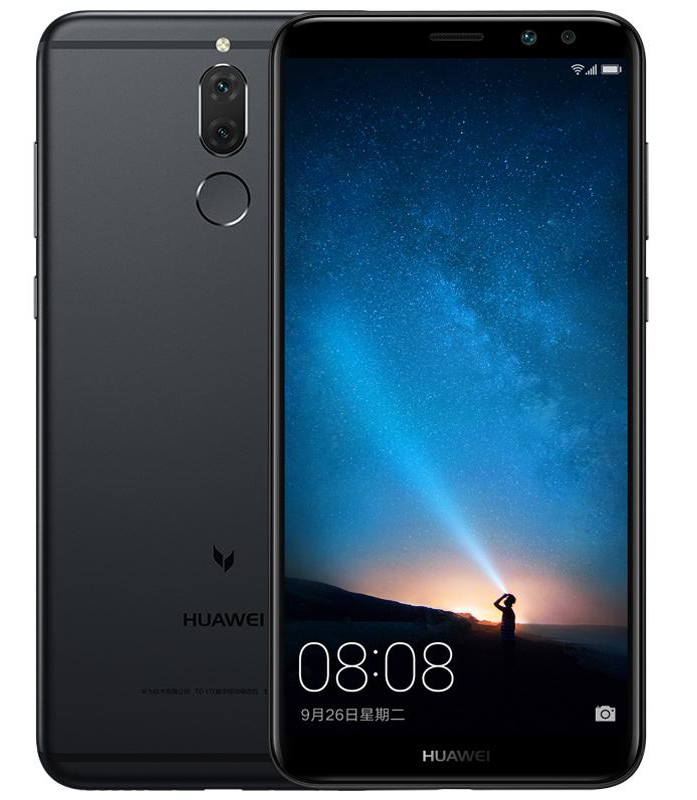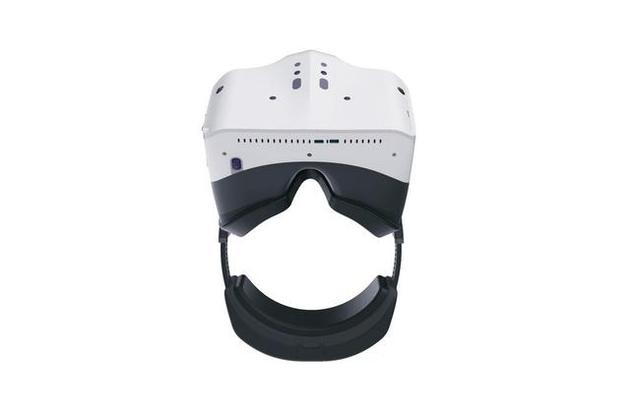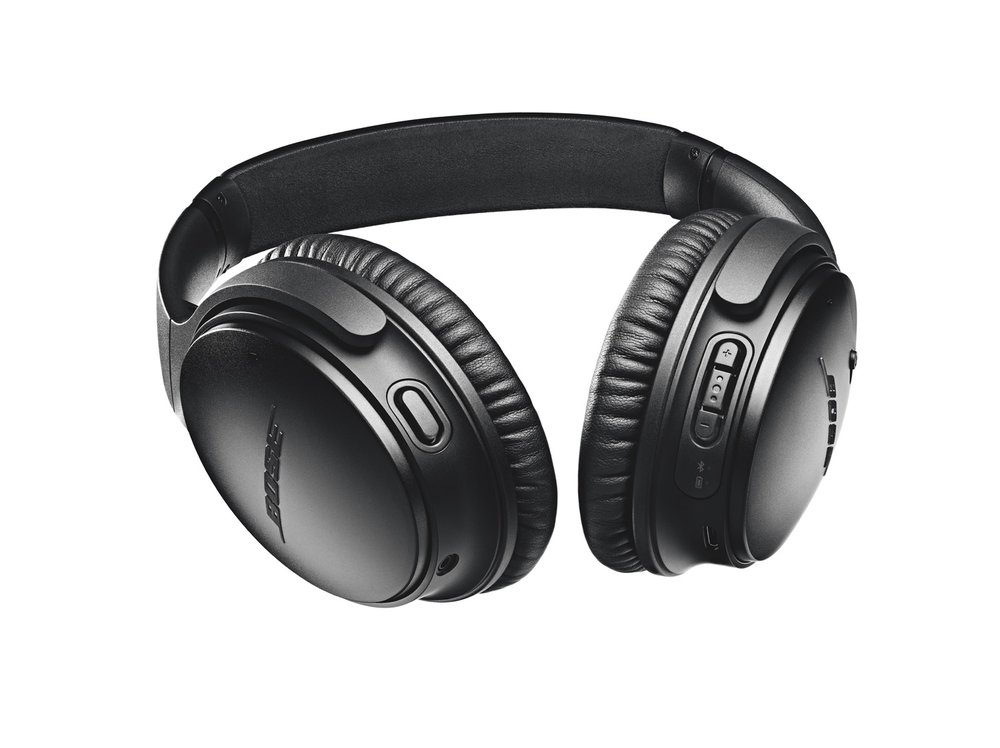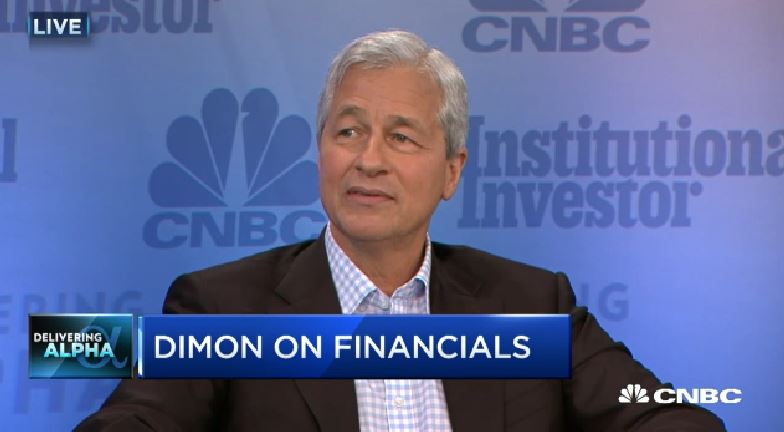
09-24: Imagination Technologies has agreed to sell itself to Canyon Bridge; Intel is canceling its plans to release its Project Alloy reference design; etc.
Chipsets
Qualcomm latest generation PMIC 5 is going to launch soon, and as it is using Bipolar CMOS DMOS (BCD) process manufacture, TSMC has allegedly won 70%~80% of the PMIC 5 orders, thanks to its advanced technology. Qualcomm’s PMIC annual shipment could reach 1M units, thus TSMC is likely to become the biggest supplier. (ESM China, Digitimes, TechNews, Yahoo)
Vijay Rakesh from the Mizuho Financial Group believes that not only will Nvidia see strong demand for its GPUs in the coming quarter but that sales may even exceed the company’s estimates by as much as 30%~50%. This is largely as a result of increased demand from buyers not looking to play games but rather using the hardware for mining cryptocurrencies like Bitcoin, driving sales of GTX 1060 and 1070 cards immensely. (Barron’s, VentureBeat, Neowin, Sohu)
Imagination Technologies, the UK-based chip maker that used to provide Apple with its mobile graphics components, has agreed to sell itself to Canyon Bridge, a Silicon Valley-based private equity firm backed by the Chinese fund Yitai Capital. Canyon Bridge is paying GBP550M (USD743.2M) for the deal. CN Beta, The Verge, Imagination, The Guardian, Financial Times)
Globalfoundries is now delivering in volume its 14nm High Performance (HP) technology that will enable IBM’s next-generation of processors for server systems. 14HP is the industry’s only technology to integrate a three-dimensional FinFET transistor architecture on a silicon-on-insulator (SOI) substrate. (My Drivers, Design & Reuse, EE Journal)
President Donald Trump blocked a Chinese-backed investor Canyon Bridge Capital Partners from buying Lattice Semiconductor, casting a cloud over Chinese deals seeking U.S. security clearance and spurring a call for fairness from Beijing. (EE World, Sohu, Bloomberg, Quartz)
As global 3D NAND, 7 / 10nm advanced process, growing Mainland China have been driving the expansion of new production, especially the 3D NAND and FinFET process requiring shadowing, etching, diffusion, film and other equipment demand has risen sharply, Japanese semiconductor equipment vendor Tokyo Electron (TEL) is positive that by 2020 global etching equipment market share will reach 30%. (CSIA, Laoyaoba)
SK Siltron has officially launched as SK Group’s semiconductor parts maker, after the group’s chairman acquired a remaining 29.4% stake from LG Siltron’s creditors. SK Group, including its chief, spent around KRW1T in total to hold a 100% stake in LG Siltron. SK Siltron manufactures and sells wafers for semiconductors. (Laoyaoba, Korea Herald, Yonhap News)
Mentor Graphics Corporation announced further enhancements and optimizations to the Calibre platform and Analog FastSPICE (AFS) platform by completing TSMC 10nm FinFET V1.0 certification. In addition, the Calibre and Analog FastSPICE platforms are ready for early design starts and IP design on TSMC’s 7nm FinFET process based on the most current Design Rule Manual (DRM) and SPICE model. (Laoyaoba, Mentor, PR Newswire)
12” wafer is in tight supply. Due to 3D NAND, foundry and Mainland China semiconductor supply chain continuously expanding production, it expects in 2017, 12” silicon wafer will cost up 50%. However, 2018, 2019 are expected to have more serious shortage. In next 2 years, all fabs are expected to start operation, however if there is no supply for the wafers, a fully built 12” fab is still useless. (UDN, NOWnews, Digitimes, Laoyaoba)
Touch Display
TCL is undergoing a new round of transformation—business focus, personnel or organizational structure, have been adjusted accordingly. TCL Group has acquired CSOT’s 10.04% stake with CNY4.034B. After the completion of this transaction TCL directly held CSOT’s 85.71% stake. (Laoyaoba, Sohu, Sina)
The overall utilization rate of display panel fabrication (fab) plants is expected to remain high in 3Q17, recording similar levels for the 5th consecutive quarter, according to IHS Markit. The overall fab utilization rate is expected to reach 91% in 3Q17, up 1.8% points from the previous quarter and up 1.1% points from 3Q16. (PJ Time, IHS Markit, press)
The Fraunhofer FEP institute, in collaboration with Nippon Steel & Sumikin Materials (NSMAT) and Nippon Steel & Sumitomo Metal Corporation (NSSMC), developed a new OLED lighting prototype that is made on a stainless steel substrate. (OLED-Info, Fraunhofer)
Chunghwa Picture Tubes (CPT) is showcasing an ultra-high resolution OLED display product, which has been realized by photolithography patterning of organic light emitting diode (OLED) arrays. The results pave the way to cost-effective manufacturing of fine, side-by-side pixels in OLEDs. CPT has been developing the high-resolution OLED displays in cooperation with the European research institute imec/Holst Centre. (Digitimes, OLED-Info, imec, Digitimes)
AP Systems has announced that it has received orders for OLED deposition equipment from CSOT for the company’s 6-Gen flexible AMOLED fab in Wuhan that is currently under construction. AP Systems said that the whole order is worth USD60.65M and the equipment will be delivered in Sept 2017~Oct 2018. (EToday, OLED-Info, iFeng)
Sensory
As the US, Europe, Japan and China have drawn up or will draw up regulations concerning autonomous driving, global demand for LiDAR sensors, key to fusion of sensors use in autonomous driving, is expected to soar over the next 10 years, according to Digitimes. According to Yole Development, production cost for a LiDAR sensor is as high as USD5,000 in 2017 and is expected to gradually decrease to USD1,500 in 2022 and USD500 in 2027 along with growing demand. (Digitimes, press, Yole)
Connectivity
Qualcomm has conducted a comprehensive survey involving nearly 6,000 consumers from 6 countries — the USA, China, UK, France, Germany, and Finland. As close to 50% of respondents are likely to be early 5G adopters. They demand faster data speeds, quicker response time, and more cost-effective mobile data plans. Furthermore, 5G was identified as the top feature that consumers are willing to pay more for in their next mobile devices. (Qualcomm, white paper, Your Story, C114, Sohu, Laoyaoba)
Smartphones
Huawei Maimang 6 (Mate 10 Lite overseas) with quad cameras is official in China – 5.9” FHD+ 2.5D curved display, HiSilicon Kirin 695 processor, rear dual 16MP dual-tone LED – 2MP in-depth + front dual 13MP – 2MP cameras, 4GB RAM, 64GB storage, 3340mAh battery, INR2399. (GizChina, Sohu, CN Beta)
Micromax Selfie 3 is announced in India – 5” FHD display, Qualcomm Snapdragon 435 processor, 16MP + 13MP cameras, 3GB RAM, 32GB storage, 3000mAh battery, INR11,999. (Android Headlines, NDTV, The Mobile Indian)
Wearables
Intel is canceling its plans to release its Project Alloy reference design, citing a lack of partner interest in the headset. . Project Alloy was an x86-based standalone “merged reality” headset that Intel unveiled in 2016, with plans to launch it as an open reference design in 2017. (CN Beta, The Verge, ZDNet, Fortune, Road to VR)
Bose debuts new Google Assistant-optimized noise cancelling headphones QC 35s, priced at USD349. They integrate support for Assistant-based offerings including incoming notifications, audio features like news briefings and voice commands for calling and music playback. (TechCrunch, Google, Tencent)
Mira is rolling out their SDK to devs and announcing it has added another USD1M from Greylock Partners, Founders Fund Angel and Macro Ventures. Earlier 2017, the startup raised USD1.5M led by Sequoia. Additionally, the company has started shipping its first 1,000 Prism AR headsets to developers. (TechCrunch, Next Reality, Gamasutra, 91.com, Sina)
Morgan Stanley’s anlyst Katy Huberty indicates that driven by the high-end smartphones, the overall augmented reality (AR) market will grow rapidly in next 3 years, reaching USD40B market size. Apple is controlling the AR software and hardware eco-system, and expecting AR-related service will bring in near USD9B revenues. (Laoyaoba, Digitimes, Barron’s, Investopedia)
Internet of Things
JPMorgan Chase CEO Jamie Dimon took a shot at bitcoin, saying the cryptocurrency “is a fraud”, and that it is not a real thing. Dimon has also said that he will not tolerate Bitcoin trading within his bank, JPMorgan.” (CNBC, Ubergizmo, Sohu)
China has banned individuals and organizations from raising funds through initial coin offerings (ICO). It views this practice as illegal fundraising. A joint statement from the People’s Bank of China, the securities and banking regulators, and other relevant departments informs those who have completed ICO fundraisings in China to return the funds. (Ubergizmo, Financial Times, Caijing, Wall Street Journal)
TalkIQ, which helps businesses better understand and take action on voice conversations with customers, announces it has closed a USD14M Series A Round, led by Scale Venture Partners with participation from Aspect Ventures, Danhua Capital, Felicis Ventures LINE Corp and Salesforce Ventures. The Salesforce Ventures investment is from its new Salesforce AI Innovation Fund. (TechCrunch, PR Web, Sohu)
